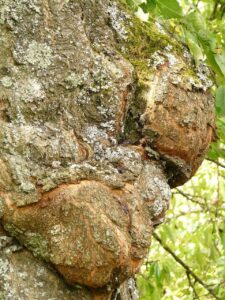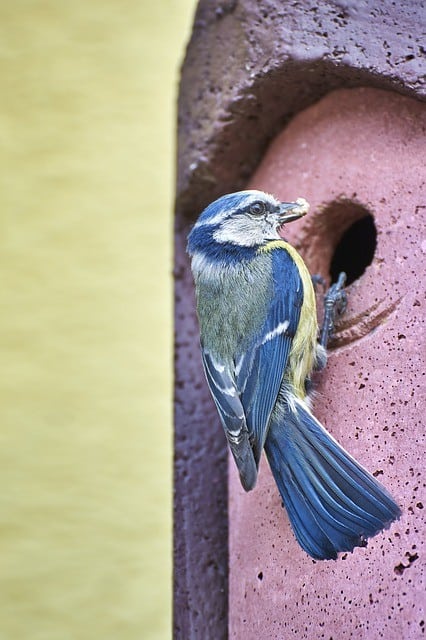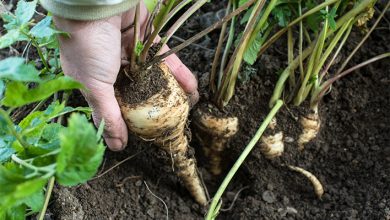What Diseases and Pests Attack the Cherry Tree? [Identify and Treat]

 Cherry tree diseases are the headache of anyone who dedicates themselves to its planting .
Cherry tree diseases are the headache of anyone who dedicates themselves to its planting .
This type of fruit develops and ripens very quickly and this makes attention to diseases mandatory from prevention.
It means that part of the care is aimed at having a good compost and exhaustive care of the entire structure.
If you have the joy of planting cherry, then get ready to know how to attack the annoying diseases that want to kill your harvest.
Let’s get started.
Anthracnose
Its action is oriented mainly to the leaves and fruits , preventing the consumption of the latter.
In some very exceptional cases the disease can attack the stem, but then the spots will appear elongated and not round.
It is important to know that its presence and development occurs from spring to summer.
In addition to that, it is much more stable when the environment is humid, so you must have maximum alert under these conditions.
Treatment for anthracnose in cherry
 As in many other diseases of fruit trees , prevention is essential to prevent anthracnose from affecting the harvest.
As in many other diseases of fruit trees , prevention is essential to prevent anthracnose from affecting the harvest.
The reason for this is that the corrective capacity is quite limited since it tends to affect the fruit and that condition cannot be eliminated.
So the best thing to do is to make sure the tree is well fortified on the nutrient level and apply a fungicide if appropriate.
To know more: All about the cherry tree fertilizer.
Monilia ( Botrytis Cinérea )
Another of the cherry tree diseases that are more worrisome because it attacks the fruits is monilia.
The appearance that it generates with the naked eye is as if the fruit were rotten, which is why in other spaces it is known as brown rot.
As cherries are small fruits that grow in large quantities, the presence of monilia in a planting can cause significant losses.
The disease is caused by a fungus known as Botrytis cinerea and it is included in the crop through wounds of the plant.
 Unlike other diseases, the presence of the fungus is easily visible because it creates a powdery, whitish layer on the surface of the affected area.
Unlike other diseases, the presence of the fungus is easily visible because it creates a powdery, whitish layer on the surface of the affected area.
Treatment for cherry tree monilia
The treatment in this case will go through pruning during the autumn period .
It is in this period that the tree tends to discard part of its leaves and this makes it easier to see if there are affected areas.
Another strategy related to this disease is to give it the correct nutrients to strengthen the entire structure of the tree.
Experts recommend that the compost contains more potassium and phosphorus and not so much nitrogen .
Bacterial chancre
 It is a disease that usually lodges in the wood cankers of the tree, being lasting for many years in a dormant state .
It is a disease that usually lodges in the wood cankers of the tree, being lasting for many years in a dormant state .
To be able to affect the normal development of the plant , it is necessary that some area has a wound through which it can penetrate .
This means that one of the peak moments to prevent the appearance of the disease revolves around autumn, when the leaves fall.
The disease can attack any area of the tree without distinction , but almost always begins in the flower bouquets with a blackish coloration.
Treatment of bacterial canker in cherry tree
The bacteria can be treated with commercial products defined for this type of disease.
However, part of the care is through prevention, making a detailed observation of the plant during the fall.
It also becomes positive at the time of pruning and until the fruits begin to form.
Screening
Screening is another disease that affects cherry trees strongly.
This is a disease that attacks the leaves, creating holes in the leaves that in some cases are called pellets.
For these holes to occur, the disease begins producing pink spots that later darken until that affected part falls off.
When the screening is transferred to the fruit, it subtracts the commercial value that it could have , making it impossible to consume it on a human level.
It should also be considered that the screening can appear for different causes, such as a bacterium, a virus or a fungus.
Cherry screening treatment
There are copper-based fungicides that work very efficiently in the presence of this type of disease.
And as it is easy to recognize, it can be attacked before it damages the fruits.
As always, a good fertilization will help the plant to be strong enough to cope .
Having all these diseases and their possible treatments on hand will be key to enjoying a large and excellent quality harvest.
Birds
 In addition to reducing the harvest , birds often damage more cherries than they eat.
In addition to reducing the harvest , birds often damage more cherries than they eat.
To control it, you can hang pieces of shiny metal or sheets of tin that move with the wind from the branches . Compact discs work too.
Use scarecrows.
Black aphid ( Myzus cerasi )
It causes the curling of the leaves and the tender shoots.
For its control, it is recommended to apply potassium soap and neem oil .
Cherry fly ( Rhagoletis cerasi )
They place their eggs in the pulp of the cherry , causing it to change color. The larvae feed on the juice of the fruits.
For its control, yellow traps or containers with sticky surfaces can be placed so that they remain adhered.
In addition, ecological alternatives can be used , such as applying 1% potassium soap sprayed with rain or distilled water on the underside of the leaves .
Mottling virus leaf cherry ( Cherry Leaf Mottle Virus )
The symptoms consist of a discoloration of the leaf . The affected leaves also develop an irregular shape.
Infections can lead to severe stunting and crop failure.
For its control it is recommended to use certified virus-free rootstocks and grafts and to eliminate the infected material in the field.

![Photo of Kalanchoe Care: [Soil, Humidity, Pruning and Problems]](https://www.complete-gardening.com/wp-content/uploads/2022/08/kalanchoe-care-soil-humidity-pruning-and-problems-390x220.jpg)


